SUMMARY
This is AI generated summarization, which may have errors. For context, always refer to the full article.
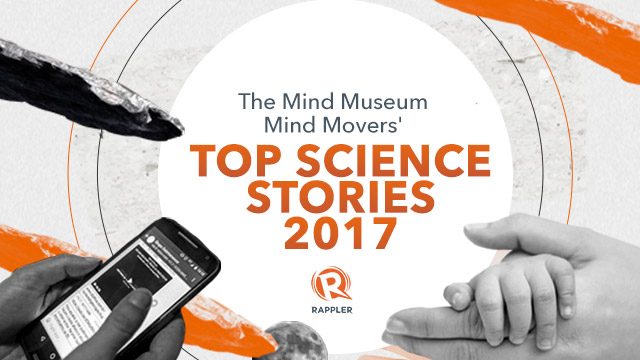
MANILA, Philippines – Another year, another fruitful 12 months for science across the world.
We’ve gotten to know our world – rather, unverse! – better, from the tiniest cell and atom to the worlds and galaxies that our telescopes can see furthest (so far). We’ve learned more about ourselves, too: how we grow, how we cure our diseases, even how the things we’ve created are affecting us.
For the 5th year, the Mind Movers of the Mind Museum, the country’s leading science museum, again give a list of what they think are the top stories in the world of science this year.
Let’s take a look at their top picks for 2017!
Successful gene therapy saves lives of infants

Three-year old Evelyn Villarreal is able to walk, dance, play, and climb onto her parents’ laps. While not unusual for a child her age, Evelyn was born with spinal muscular atrophy type 1 (SMA1), a genetic disease that paralyzes infants, until they are unable to breathe on their own.
Infants born with SMA1 lack a functioning gene that codes for a protein that sustains the motor neurons in their spinal cord. With too little of the protein, babies with SMA1 have weak muscles, and cannot even lift their heads. Infants with SMA1 usually do not make it past 2 years old, but with the help of gene therapy, Evelyn and the 14 other infants who received treatment are alive.
The clinical trial used a virus to carry the gene into the infant’s central nervous system. Once introduced, the gene slowed the progress of the disease, and the babies’ muscles became stronger. As of reporting, many of the babies are now able to sit at least briefly without help, eat, and speak. – Erin Mercado
A more precise way to fix mutations in DNA
Researchers have modified a DNA-editing tool to become more precise, by repairing tiny mutations in the genome. Known as CRISPR-Cas9, this tool can cut DNA and RNA strands at specific locations to fix mutations and potentially treat diseases such as cancer and HIV. The new method, called base editing, can change a single “letter” or nucleotide base at a time.
When a base in a strand of DNA is changed, deleted, or inserted, this is known as a point mutation. Point mutations comprise more than half of the 50,000 changes in the human genome that are associated with disease. Instead of cutting out a chunk of DNA from the genome, base editing can simply rewrite these tiny errors in the code, like changing an A (adenine) to a G (guanine).
Harvard researchers have used base editing to correct a single mutation that causes hemochromatosis, while researchers from Sun Yat-sen University have also used base editing to fix a point mutation that causes inherited anemia. Researchers aim to use this technique to find treatments for many other diseases. – Erin Mercado
Era of multi-messenger astronomy opens with a bang and a flash

This year, for the first time ever, scientists observed an astronomical event using multiple “messengers” – light and gravitational waves. The detection, which came from the merging of two neutron stars, has been hailed as the beginning of “multi-messenger astronomy”.
Gravitational waves are ripples in the fabric of space-time predicted by Einstein’s theory of general relativity.
Since the announcement of the first gravitational wave detection in 2016, scientists detected five sources. The other four came from merging black holes, which do not produce light. The fifth detection from merging neutron stars was observed using both light and gravitational waves.
People compare the dawn of multi-messenger astronomy to the transition from the age of silent films to the era of talking movies. Before this point, humans have observed the universe using only light. With multi-messenger astronomy, humans can now both see events take place and detect the gravitational “bang” coming from them.
The first detection of gravitational waves last year was honored with a Nobel Prize in physics. This year’s top physics prize which was awarded to three scientists who played a major role in that detection. – Pecier Decierdo
Astronomers spot visitor from outside Solar System
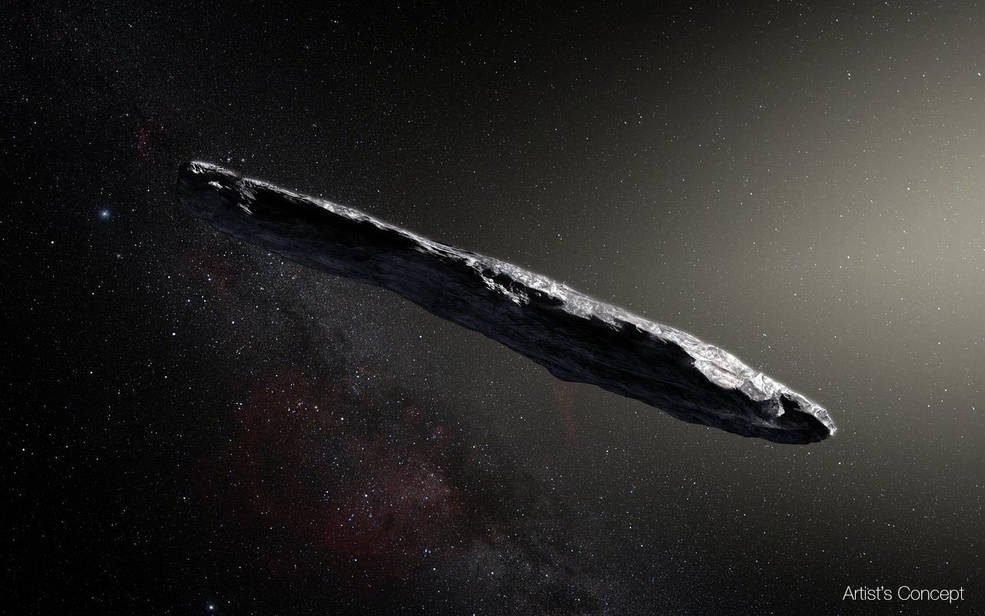
In October of this year, astronomer Robert Weryk and his colleagues working with the Pan-STARRS telescope discovered a rock that came from outside the Solar System.
The so-called “interstellar visitor” has been given the name ‘Oumuamua, which came from the Hawaiian word meaning scout or first messenger. The Pan-STARRS telescope used to discover the interstellar visitor is found in Hawaii.
Astronomers have determined the interstellar nature of ‘Oumuamua by tracking its path across the Solar System.
Astronomers noted that ‘Oumuamua was traveling so fast it could escape the Sun’s gravitational pull and fly out into interstellar space. ‘Oumuamua was also moving in a path very different from asteroids.
By putting the different clues together, astronomers concluded that ‘Oumuamua came from outisde the Solar System. ‘Oumuamua is probably a piece of rock from another star system that was flung out during that system’s early stages of formation.
Aside from being from far away, ‘Oumuamua also surprised scientists when they discovered it is ten times longer than it is wide, giving it a very elongated appearance.
Astronomers around the world are currently racing to learn as much as they can about this interstellar visitor before it flies away from us, never to come back. – Pecier Decierdo
Smartphone addiction can alter brain chemistry

A group of Korean researchers have discovered that smartphone- and gadget- dependent teenagers have altered brain chemistry. A magnetic resonance spectroscopy (MRS) test was used to measure the levels of gamma aminobutyric acid, or GABA, a neurotransmitter responsible for slowing down brain signals, and glutamate-glutamine (Glx) a neurotransmitter that alternately excited neural cells. GABA is also found to be responsible for visual and motor controls.
High levels of both GABA and Glx were found in a part of the brains of smartphone-addicted patients and these are linked to several side effects such as drowsiness and anxiety. The researchers believe that increased levels of these neurotransmitters may correlate with loss of regulation and processing in both cognitive and emotional brain network, and may be related to long term disruptions and effects to social life, productivity, feelings, and sleep patterns. – Artha Ting
Discovery of a kill-switch that could destroy cancer cells
Researchers are looking into small interfering RNA’s (siRNAs), DNA-like molecules used to make proteins, to stop cancer cells from growing by silencing targeted genes.
Mice induced with human ovarian cancer cells were treated with siRNA’s and results show strong reduction of tumor growth, no toxic side effects and no development of resistance to the treatment.
Scientists from Northwestern University call this mechanism as Death Induced by Survival gene Elimination (DISE) that allows the activation of multiple death pathways for the cancer cells. Marcus Peter, Northwester scientist explains the mechanism as “it’s like committing suicide by stabbing yourself, shooting yourself, and jumping off a building all at the same time” but without harmful effects to normal, healthy cells. Researchers are further studying what they call “nature’s original kill switch” as an innovate form of cancer therapy. – Artha Ting
Artificial intelligence masters poker and strategy game Go
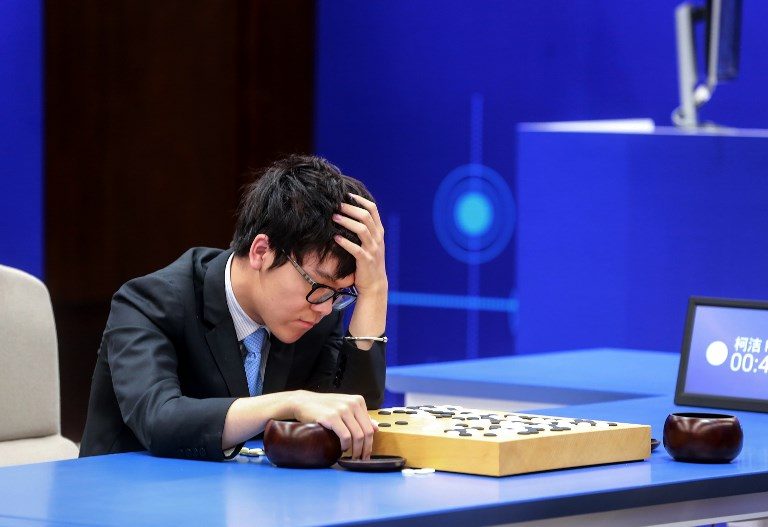
2017 was a winning year for artificial intelligence (AI), with computer programs mastering the complex strategy game of Go as well as the largely intuitive game of poker.
Google’s AlphaGo defeated the Go world champion Ke Jie in a series of high-profile matches held in China, winning 3–0. Spectators familiar with Go have noted the AI’s unorthodox moves which challenge conventional strategy for the ancient game. AlphaGo uses machine learning and neural networks to learn from experience, playing large numbers of games against itself and analyzing strategies that led to success.
Across the world, two other AIs have achieved early success in poker, beating professional card players in Texas Hold’em. Unlike chess and Go where each player knows what the other is working with, poker players’ hands are kept hidden. This makes it more difficult for the AI to make bets and predict what its opponents will do. Their success shows how the technology can be adapted for use in real-world problems like security and negotiations. – Cara Evangelista
Dengue vaccination program suspended after new warning from Sanofi
The school-based dengue immunization program has been suspended following Sanofi Pasteur’s new advisory about its Dengvaxia vaccine. The French drug firm said that further clinical studies had shown that the vaccine could actually worsen the disease in those who with no prior infection.
The announcement confirmed the apprehensions of health advocates in the Philippines who had criticized the widespread use of the new drug, which has been administered to over 700,000 school children since the mass vaccination program began in 2016.
The World Health Organization and Department of Health are reviewing the information and have yet to decide how to proceed. – Cara Evangelista
Dogs really want to communicate with you

Do you ever get the feeling that your dog only likes you because you give them food? According to research from the University of Portsmouth, that doesn’t seem to be the case.
Researchers discovered that dogs perform more facial expressions when there is actually someone to see their face. This was observed to occur more often than when they are presented with food. This implies that their facial expressions are not just emotional displays in response to food, but possibly due to an actual response to human attention.
One particular expression they observed to occur most often is what is colloquially called “puppy dog eyes” or the raising of brows to enlarge the eyes. The researchers speculate that this communicative link between dogs and humans could be attributed to our long history with dogs during the course of each other’s evolution. – Garrick Bercero
Too many toys might spoil a kid’s creativity
It’s almost Christmas and if you haven’t done your gift shopping yet, you might want to hold off on buying toys for the toddlers in your life. A University of Toledo paper reports that having fewer toys allows a child to be more creative with playing with the toys they already have.
In a study of toddlers under three years of age, researchers observed that when children are given just four toys versus sixteen toys to play with, the toddlers engage at longer periods with each toy and are able to play with the toys with a greater variety of ways. The researchers noted, “When provided with fewer toys in the environment, toddlers engage in longer periods of play with a single toy, allowing better focus to explore and play more creatively.” – Garrick Bercero
Breakthrough in Quantum Computing will revolutionize the world
A team lead by Mikhail Lukin announced that his team had successfully build a 51-qubit quantum computer. The announcement was made during the 2017 International Conference on Quantum Technologies in Moscow, Russia. This quantum computer is 2-qubit more than Google’s 49-qubit quantum computer.
As transistors approach the size of just a few atoms, quantum effects will occur and controlling the flow of electrons will be impossible. Scientists are trying to use these quantum properties their advantages by building quantum computers. Unlike the classical counterpart where a bit is either a ‘1’ or ‘0’, a qubit can be ‘1’ and ‘0’ both at the same time until you measure them. This enables a quantum computer to perform multiple calculations all at the same time.
For comparison, a classical 4-bit has 16 possible configurations out of which you can use just one at a given time. A 4-qubit, on the other hand, has 16 possible configurations, all of which can be used at the same time. For more info, you may check out this video for more info. – Art Galapon
Metallic Hydrogen has been created
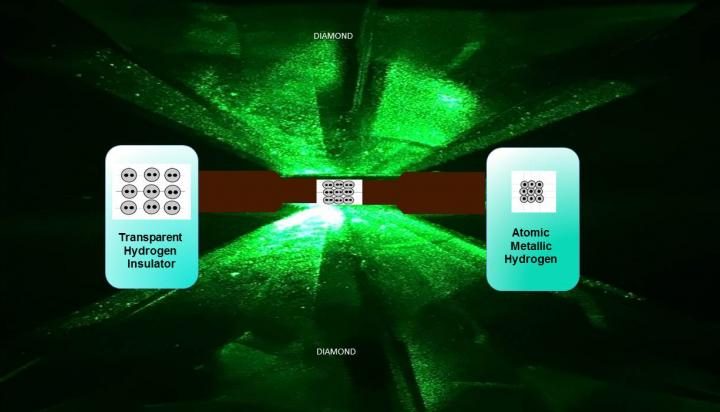
Scientists have finally created metallic hydrogen 80 years after it was predicted to be possible. A team from Harvard University, lead by Isaac Silvera and Ranga Dias, created he elusive state by applying 4.95 million atmospheres of pressure to liquid hydrogen. At 1 atmosphere (normal pressure), hydrogen occurs in its gaseous form. It turns opaque black at 4 million atmosphere, a pressure level even greater than those found at the center of the Earth. Hydrogen starts to exhibit its metallic property around 4.95 million atmospheres.
Metallic hydrogen is predicted to be an authentic superconductor. This means that if you transport energy on a metallic hydrogen wire, you will have no dissipation due to its lack of resistance. Metallic hydrogen, according to Dias, would open up advancements in electricity production, transportation, rocketry, as well as other fields.
As of now, metallic hydrogen exists in the lab and under high pressure. It is not yet known whether metallic hydrogen is stable under normal conditions. – Art Galapon
Breakthrough for organ transplants: Human-pig embryos from stem cells
Researchers from Salk Institute successfully created a human-pig embryo through stem cells in an effort to understand more about human development and address shortage of donor organs.
The project published in Cell, proved that human stem cells can be used to form human organs in non-human organisms, survive, and even grow an embryo in a pig albeit challenging. “The ultimate goal is to grow functional and transplantable tissue or organs, but we are far away from that,” says Juan Carlos Izpisua Belmonte, the lead investigator and a professor in the Salk Institute of Biological Studies’ Gene Expression Laboratory. “This is an important first step.” – Christer de Silva
Giant pandas, no longer endangered – but we need to do more
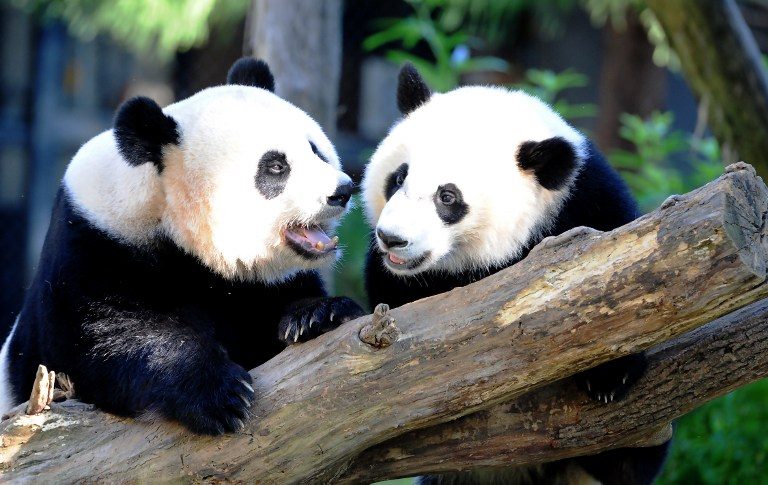
In September 2016, the half-a-century effort to save the giant panda has paid off when The International Union for the Conservation of Nature (IUCN) announced the good news that the giant panda is out of the “endangered” category and into “vulnerable” group. This brought the spotlight to the giant panda for most of 2017.
However, conservation is not an easy feat. Scientists from Michigan State University only agree with the IUCN’s down-listing of the giant panda from “endangered” to “vulnerable” at a certain point. They want to understand more details to ensure the sustainability of the species and ensure their long-term survival.
“Sustainability of a species like the panda relies on holistic and thorough analyses,” said Jianguo “Jack” Liu, Rachel Carson Chair in Sustainability. “We all want to do a victory dance for the panda, but need to continue to understand and address possible threats. There is no declaring a victory and moving on.”
In line with this, the giant pandas are still on the brink of extinction because of climate change. Moving on the list is a first step but we need to do more to save animals like the giant panda from the threats of climate change. – Christer de Silva
How about you: What are your top science stories for 2017? – Rappler.com
You can also check out the 2016, 2015, 2014, and 2013 lists.
Add a comment
How does this make you feel?
There are no comments yet. Add your comment to start the conversation.